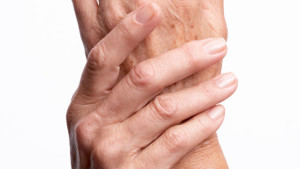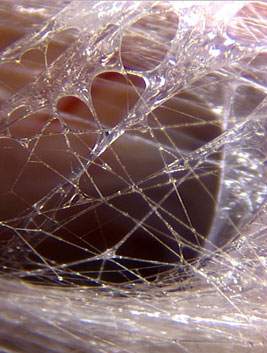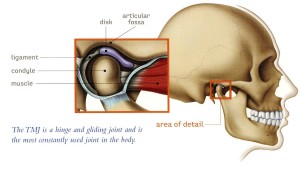by SharonHartnett | Jun 29, 2015 | Craniosacral Therapy, Massage License in Ohio: 33.007505-H-K, Structural Integration
Arthritis Pain…Are your joints becoming inflamed causing chronic pain and fatigue?
Keeping an open mind to various treatments for arthritis can be your best bet.
There are many articles online about natural remedies to take such as Sam-E, creams, Magnesium, along with conventional medicines that are aggressive and have side effects, etc… but have you heard of Craniosacral Therapy?
Craniosacral Therapy (CST) is so gentle that practically any person is able to receive the work and feel better. It is based on the principle of listening to the body’s own internal resources for direction that know how to help maintain and repair damage.
In my office, I have often combined myofascial release techniques along with CST with amazing results. I had one woman recently who could hardly turn her neck, and could barely get through the night with a full night’s rest. Her medical history with a disk replacement was just the beginning to her ongoing pain. For years she had suffered miserably. In just a few sessions, she is feeling much better rested, and pain free. She told me she feels like she has a new body.
Honestly, I don’t take credit for this. It is her self-correcting inner source mechanisms that know how to heal. I just help her to tap into that so that health and wellbeing is restored.

arthritis
Two Main Areas to Work to alleviate arthritis pain:
Fascia: Releasing restrictions in the fascia can help the body to let go of stress and tension, while increasing better circulation and energy flow. As has been more recently discovered, the fascia tissue is a fundamental communicator in the body, The more fluid and hydrated the tissue, the healthier the body is in relaying messages. Tissues and body systems that work together stay resilient and recover quickly as the tissues slide freely next to each other. Fascia is also like a web that wraps around the body and contains throughout. If one spot in the body is brought out of alignment, it pulls from other area. Compensation soon leads to dysfunction longterm if not treated. Connective Tissue Massage can be very beneficial for this type of pattern. It’s important to remember that fascia is also key in keeping structure, but also in promoting flexibility. Exercising, Fascial Therapy and moving multi-dimensionally will keep you feeling healthy and optimally. Working with a Structural Integration Therapist, CST or a Rolfer can really change how you move and feel.
Craniosacral System: The Craniosacral System is a Semi-closed hydraulic system. The membranes and fluid that surround the brain and the spine contribute to the protection and the nourishment of the nervous system. Since the Central Nervous System controls the rest of the body, it is a key area to work with to address dysfunction and ill health. A Craniosacral Therapist works with the bones and the fluid to help the body to reconnect to its own Inner Physician. The cebrospinal fluid is created in cycles and reabsorbed continuously , but do balance out. So we work with following and supporting symmetrical and powerful flexion and extension cycles during these rises and falls is essential to good overall health..
Between the fascia and the CST, we can feel into holding and restrictive patterns easily through the whole body. The combination releases area where the muscles and joints are tight, allowing more mobility and ease in the body.
For more information, please feel free to call Sharon Hartnett at (740) 966-5153 for a 15 minute phone consult.
Arthritis pain can be helped through diet choices, herbs, movement, good rest and medicines to say the least. Why not add some manual bodywork to deepen your potential to heal?
Sharon Hartnett LMT, CST, SI
703 509-1792
www.upledger.com
www.cranioscraltherapistcolumbus.com
by SharonHartnett | Jun 10, 2015 | Craniosacral Therapy, Massage, Massage License in Ohio: 33.007505-H-K, mind body & spirit, Structural Integration, thought for the day
Resolving Carpal Tunnel Syndrome symptoms…
It’s interesting to me that clients who come in with Carpal Tunnel Syndrome have been told that the main issue is a pinched nerve in the wrist that causes pain, tingling and numbness. While this is true on one level as the median nerve is compressed, many massage therapists and bodyworkers have found that the shoulder and neck posture or tightness are also main contributors to this condition. A holistic approach is often needed if the problem does not go away on its own.

Carpal Tunnel Syndrome
Some of the symptoms of Carpal Tunnel Syndrome:
- Pain
- Tingling
- Numbness
- Weakness
- Stiffness
- Swelling
Carpal Tunnel Syndrom is a gradual process of dysfunction. Repetitious movements can be a big contributor. The smartest thing to do for the easiest healing process is to face it straight on when experiencing the above symptoms at the onset. If you treat for it immediately by resting or stopping activities that aggravate it, it may go away on its own in a couple of weeks. Working with a PT and/or a Licensed Massage Therapist can also help alleviate pain and support the nervous system as well. By working with the shoulder girdle, scapula, neck and ribcage, arm and wrist- basically anywhere from where the spinal nerve leaves to it’s end facially, the client can often find a reduction in symptoms in a few weeks.
Carpal Tunnel Syndrome can take you out of work. Consider listening to your body when you notice any of the above imbalances. Being proactive is always easier than being reactive!
Sharon Hartnett LMT, CST, SI
Columbus Ohio Massage Therapist
www.massageincolumbusohio.com
(740) 966-5153
by SharonHartnett | Jun 9, 2015 | Craniosacral Therapy, Massage License in Ohio: 33.007505-H-K, Structural Integration
One of the chronic physical conditions that benefits best in the world of manual therapy is the lessening of pain for clients by helping to loosen direct and indirect soft tissue restrictions.
In my practice, I have found two areas of massage therapy that have consistently proven to help increase range of motion and to relax the musculatures and other internal systems so that the body can fall back into its natural alignment: 1. working directly with the musculature and 2. also by focusing on fascial tissue.
Most people who have received basic massage know what it feels like to have a muscle worked. You go in and you feel either light or deep pressure going inward and moving in a certain directions. That can feel wonderful. Your circulation increases, stress melts away, and the lymph system works more efficiently, all with an hour of massage. But if you want longer lasting structural change, the fascial component of the work can create longer lasting shifts and release bones and other adhesions that hinder good flexibility. This feels very different in quality when receiving because the intention is to work with this web of tissue that contains and runs through almost everything in the body. Either using fingers, the hand, or an elbow, the practitioner enters the fascial system and helps it to stretch or unwind so that the client can move more freely. She can work with the bones, the viscera wrappings, and all the contents either directly or indirectly while inviting the client to move certain ways to find length and movment. As one point or section is released, the rest of the body feels he tautness let go too, even if on an unconscious level. Everything is connected in the body and the fascia is key into bringing balance throughout the whole structure.

The New Frontier in Pain Relief!t
In the quiet of the body there is nourishment. At the same time, the body also needs to move from the cellular level to the larger systems to stay healthy. Deep myofascial work can do wonders to help you accomplish this by touching into stuck places and releasing old patterns. Through therapies like Craniosacral Therapy with a light touch or Ida Rolf’s 10 Session protocol for Structural Integration, fascial work will bring balance and lightness back into your step!
Sharon Hartnett LMT, CST, SI
Columbus, Ohio
703 509-1792
www.massageincolumbusohio.com
by SharonHartnett | Jun 6, 2015 | Craniosacral Therapy, Massage, Massage License in Ohio: 33.007505-H-K, mind body & spirit, Structural Integration
Does anyone know how to resolve TMJ and Clenching Problems?
I would really like to tell you that there is an easy fix for the pain in your jaw, but that isn’t always true. While some cases go away by themselves over time, others continue to get worst.

TMJ
TMJ is a disorder that can cause stress and pain to the temporomandibular joint and surrounding soft tissue.
With more that 15% of adults living with fascial pain, earaches and ringing, jaw pain and headaches, it may behoove the person suffering from this condition to try various methods to get the help they need. If you are experiencing any of the following symptoms while opening, closing or moving your mouth, or while sleeping or awakening in the morning, you may be in need of some support to restore and rebalance the positioning of the head, neck and mouth in relationship to healthy postural alignment throughout the body:
- difficulty opening and closing the mouth.
- jaw pain while yawning or chewing.
- pain or ringing in the ear area.
- hearing and/or feeling popping or clicking sounds.
- headaches.
- tenderness around the teeth and gum areas.
- teeth grinding
- jaws get stuck or locked.
- any swelling in the face
These are all common symptoms of what is know as TMD (Temporal Mandibular Disorders).
With a background focused mostly in Structural Integration and Craniosacral Therapy, I have found 5 things that seem to help clients improve and resolve this condition.:
- Myofascial Structural Therapy to improve how the head rests over the body.
- Craniosacral Therapy to improve movement within the sutures and to create balance in the cranium.
- Stretching and Movement Exercises. Not only are neck exercises crucial for improving neck posture, but also the pelvis needs to be freed up and symmetry between the legs established in order to help self-correct TMD. Some great options would be yoga, Feldenkrais, Continuum, gyro tonics and free dancing.
- See a dentist for a bite appliance. However, from a bodyworker perspective, I suggest one for the lower teeth rather than the top which is usually recommended. Wearing any type of appliance on the top that restricts movement of the maxilla only inhibits healthy movement of the cerebrospinal fluid.
- Meditation to reduce stress. The Central Nervous System Stress can play a big factor in mouth disorders by creating tension in the musculature. Letting go of stressful beliefs through inquiry (www.the work.com) or something like breathing exercises or a walk through nature can be very helpful.
- Explore options with your pillow. If you sleep on your back, you don’t need one. However, if you sleep mostly on your side, there are some nice posturepedic options available.
- SomatoEmotional Release helps clients to feel deeply into their bodies and let go of unhealthy energy patterns of stress.
Three things to avoid: Chewing gum and holding your cellphone in your neck. Stop slouching and find length in your spine while reading or sitting at a computer.
If you are in the local Columbus Ohio area, or would like a free 15 minute phone consultation, please feel contact me.
Sharon Hartnett CST, LMT, SI
(740) 966-5153
www.massageincolumbusohio.com
by SharonHartnett | May 24, 2015 | Craniosacral Therapy, Massage, Structural Integration
Deep Tissue Massage Reaches those places you didn’t even know hurt….
Deep Tissue Massage can release deep tension areas in the body certainly. And many clients who come in for a massage request it. Resolving those deep core issues can unleash the healing potential in your body on many levels.
As a Massage Therapist for over 18 years, I have learned that there are more than a few ways to access the deeper imbalances in the body. And it’s not always the way you think. Initially digging in is not always the best way to address pain in the long-run, in fact; in may be counter-productive. Personally, I have had some big muscles athletes come in and say that they want a lot of elbow work. Sure- I can do that and it does have an appropriate time and place. But if the tissues aren’t ready to receive that type of touch, the body can go into defense and fight the work. With the way that most of us work hard each day and and deal with stress in our personal lives, we deserve to have a session that complements our health goals. The best way to unwind those long-held tension patterns is to:
- Start superficially to release the myofascial dysfunction there, and then layer deeper down.
- Being Mindful will bring more awareness to your own body and how you hold stress and can release it.
- Breathe and notice how your breath stops and/or flows. Where does it go and where does it stop?
- Plan on a few sessions so that your therapist can meet you were you are for uniquely tailored sessions.
- Dialogue with your therapist as to what is helping you to release. you will know what is working.
- Let your therapist know if you are on any pain medicines so he/she doesn’t overwork your muscles.
- Be curious if your Massage Therapist is present with you rather than doing a routine. You’ll be surprised that if you are mindful, you can feel the difference.
- Have clarity about your boundaries. Some work may be uncomfortable, but let your therapist know if it is helping or making things worst. If you want more pressure, ask for it.
- Ask for different types of massage work. There is a huge variety of modalities such as Structural Integration, Craniosacral Therapy, Thai Massage, Aromatherapy, Swedish and more. It will help you know which suits you best. Some can be light touch, but feel rather profound. Others may be physically deep but feel like there is no real contact. A good therapist will find a way to touch you the way your body needs to release tension, and yet make it comfortable enough that it feels good.
- Educate yourself. Therapists vary in their approach and the tools they use. Interview them about their experience.
Deep tissue massage helps to relax muscles, increase oxygen and blood flow to your muscles. It helps the body to remove toxins and metabolic waste from sore and overused muscles allowing quicker recovery. Deep Tissue Massage feels incredible with it is done appropriately. There is nothing that feels better than when pain dissipates and pleasure take over. When our bodies feel healthy and in balance, life takes on a whole new look. Joy and a positive attitude take over in the absence of pain.
If you want to focus on realigning your posture with slower and deeper massage work, you are in for a treat. Feeling good and feeling alive!

Deep tissue massage
Sharon Hartnett LMT, CST, SI
740 966-5153
Lighten Up Therapies
Serving Johnstown and Columbus Ohio areas.
www.massageincolumbusohio.com
by SharonHartnett | May 21, 2015 | Craniosacral Therapy, Energy Healing, Massage License in Ohio: 33.007505-H-K, mind body & spirit, Structural Integration, thought for the day
The most frequently asked question I receive from clients is…
“How often should I come see you for massage therapy treatments?”
To be honest, one of the reasons I became a massage therapist was because many years ago, my best friend Karen practiced on me while she was in massage school for two hours once or twice a week and I got hooked. She had the most warm and embracing hands that melted everything in my body and soul. I unwound and felt so happy and peaceful afterwards. It was like living on cloud 9 with my body feeling very grounded at the same time. She had the touch of an angel, and I felt so embodied and centered after our sessions.
It wasn’t until a couple years later, when I moved from Colorado to Ohio, that I actually took the plunge myself and dove into the Massage school curriculum at a Massage School in Akron, Ohio. Even then, I was quite surprised to find myself there as it was the last thing I expected as a career choice for myself years before. But the touch, and the healing was wonderful, and I knew that I was right where I needed to be more than any doubts that showed up. So- if I am asked how often should a client receive massage, I’d most often recommend as often as possible as long as it feels therapeutic and it is in your budget. Massage Therapy feels great and helps you to let go of stress and tension which is not healthy for you. When you find the right massage therapist for you and form a deep relationship of holding and healing, your essence and light breaks through so you can be your best. That’s how I view it for myself, and the clients that I see.
With that said, once the above is determined, I like to remind clients and potential massage clients that if you are living in chronic pain or feel an acute pain condition that has just come about, that it takes time for the body to heal. The physical world does not mend as quickly as we are able to skip over to a new thought. Biological healing is a process that unfolds with care and connection. And in most cases, pain situations are an accumulation of many factors including: postural imbalances, habitual patterns of movement, stress, emotional issues, sports injuries, birth traumas, challenges taking in a healthy diet, toxins in our environment, along with other dysfunctional interactions we have in life. So with all that goes into creating a painful situation, it is necessary to balance out with receiving quality care, and allowing the body to repair and self-correct after treatments. Don’t put your stock into a one time fix, although many times these types of miracles can occur to resolve pain relief. In most cases, more work is needed to help the body restore itself to its natural healthy state for the long-run. If you want the honest answer to the question “how many massage sessions do I need to come in for”, the answer is that it depends on your commitment to feeling well and doing whatever it takes to accomplish that. And- healing is a unique and different experience for each person and each relationship.

Massage Columbus
In my practice, I have some clients that come a few times a year for a tune-up or for when they are feeling out of whack, and I have clients who come once or twice a week until things turn around. When clients are specifically interested in the Structural Integration for better alignment and pain relief, I follow a ten session recipe as prescribed by Dr. Ida Rolf for optimal postural re-education results. If the client is experiencing a bulging disk or nerve pain, sometimes it’s best to get a chiropractic adjustment, and wait a day or two for your massage and bodywork. Once the bones are stable, the fascia and other soft tissue needs to be released to help the client to stand straighter in better form. Massage is focused on soft-tissue. Craniosacral Therapy is a fantastic modality of work that directly works with the cerebrospinal fluid surrounding the brain and spine. It is a tremendous therapy for helping clients with structural issues also, although with a light touch. Wonderful benefits has been experienced with conditions like anxiety, stress, ADHD, fibromyalgia, neck and back pain and headaches and more. Clients who can’t fall asleep at night often fall asleep on the table because they are so relaxed. It may take a few sessions, but slowly the nervous system balances and learned to heal in many cases.
Personally, as I have been working in this field almost 17 years, I have more recently kept most of the focus in my practice on myofascial therapy including Craniosacral Therapy, and Structural Integration (as taught by Dr. Ida Rolf). I also include mindful exploration of the mind, body and spirit connection for those who are interested. I have a background in Brennan Healing Science (graduate at former faculty as the Barbara Brennan School of Healing), Reiki, and I like to include my trauma background and Hakomi practice as well into my work. I find that when people come into the massage office, that they are best served by being held in the sacred space of healing and health. However that stress is showing up, my office is a confidential place where everything can be as it is without new conflict or distraction. Because I personally enjoy working with Somato-Emotional Release and with people hoping to find pain relief from previous trauma, I usually like to see clients once a week on an ongoing basis until they feel good. My preference is to work with people who are commitment to feeling well. They get the best results because they see deeper that a session or two for a quick fix. And my hope is that I am doing the best job to help them so that at some point they can stop, or take long breaks until they could use either some proactive massage therapy or they are feeling uncomfortable again.
It’s important to mention that each massage therapist has his/her own unique style. Each client is organized in his/her own way. While a massage therapist can hold space, we are not licensed as psychotherapists. But many of us have had training in dialogue, wellness, coaching, and spiritual healing. If you are committed to unfolding into your presence and health, consider a long-term relationship with your massage therapist and any other type of therapist you would want on your healing team. There are so many possible stresses in the world, we all can use a helping hand at some time. And we all deserve to be happy and feel our best!
Sometimes, I think we forget to treat ourselves well and we give all the excuses in the world to not give ourselves the quiet and nourishment we need.
Wishing you a sacred and beautiful day.
Sharon Hartnett LMT, CST, SI, Brennan Healing Science Practitioner.
740 966-5153
Lighten Up Therapies
Serving the Columbus, Ohio Area
www.massageincolumbusohio.com
www.upledger.com
For your Massage and Bodywork questions, please feel free to write~






